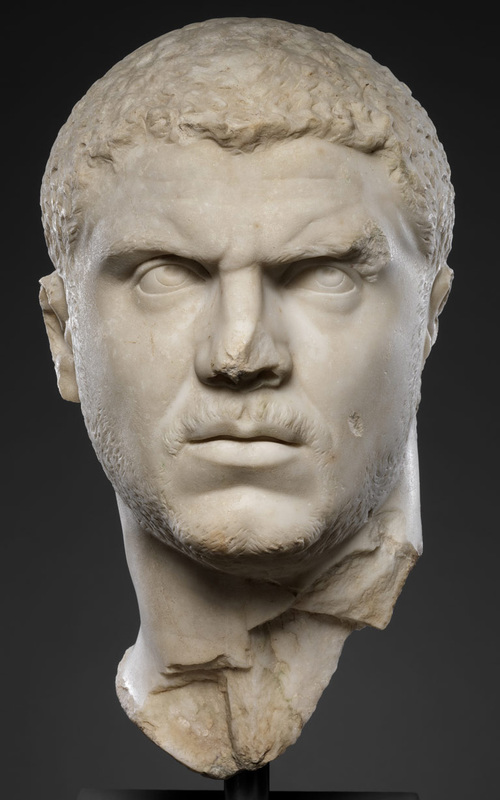Met Caracalla
Title
Met Caracalla
Date
Severan Period, AD 212-217
Artist or Workshop
Unknown
Materials
Marble
Height of the work
36.2 cm tall
Provenience
Italy, Rome
Current Location
The Met, New York, NY, United States
Sitter Biography
Caracalla was the son of Septimius Severus and born AD 188 in Gaul. He was the second emperor during the Severan dynasty and began his rule in AD 198 alongside his father until his death in AD 211. Caracalla and his brother, Geta, then ruled as co-emperors until Caracalla had Geta murdered to take sole control over Rome. Caracalla left Rome in AD 213 on a military campaign and never returned. During his journeys, Caracalla became enthralled with Alexander the Great, mimicking his style in his portraiture. Upon his death in AD 217, Caracalla was subjugated to an unofficial damnatio memoriae.
Description and Significance
Description:
This marble sculpture depicts Caracalla’s head from the base of his neck to the top of his head. His head is turned sharply to his left, and his eyes look upwards and to his left. He has a short-cropped haircut and trimmed beard. His head is shaped like a block and he has a squarish face. The facial X is formed from exaggerated musculature above his eyebrows and deep nasolabial lines around his mouth. His mouth carries no expression, but the heavy furrowed brow creates a scowl on his face.
Significance:
Caracalla distinguished himself from previous emperors in the Severan dynasty by portraying himself in sculpture with a short-cropped, military haircut and a stubble beard, unlike the long curls of hair and full beard of other Severan emperors. The characteristic sharp turn in his head found in his other portraits can be an attempt to connect with Alexander the Great in terms of military conquest and victory. The Met Caracalla is an example of a psychological portrait. The facial X is meant to communicate an intensity in Caracalla’s personality. The beginning of his sole rule over Rome began with the murder of his brother and his rule was characterized as violent.
This marble sculpture depicts Caracalla’s head from the base of his neck to the top of his head. His head is turned sharply to his left, and his eyes look upwards and to his left. He has a short-cropped haircut and trimmed beard. His head is shaped like a block and he has a squarish face. The facial X is formed from exaggerated musculature above his eyebrows and deep nasolabial lines around his mouth. His mouth carries no expression, but the heavy furrowed brow creates a scowl on his face.
Significance:
Caracalla distinguished himself from previous emperors in the Severan dynasty by portraying himself in sculpture with a short-cropped, military haircut and a stubble beard, unlike the long curls of hair and full beard of other Severan emperors. The characteristic sharp turn in his head found in his other portraits can be an attempt to connect with Alexander the Great in terms of military conquest and victory. The Met Caracalla is an example of a psychological portrait. The facial X is meant to communicate an intensity in Caracalla’s personality. The beginning of his sole rule over Rome began with the murder of his brother and his rule was characterized as violent.
References
https://www.metmuseum.org/art/collection/search/253592
Scott, Andrew (2008). Change and Discontinuity Within the Severan Dynasty: The Case of Macrinus. Rutgers. p. 139.
Sillar, Shamus (2001). Caracalla and Imperial Administration 212–217. pp. iii.
Scott, Andrew (2008). Change and Discontinuity Within the Severan Dynasty: The Case of Macrinus. Rutgers. p. 139.
Sillar, Shamus (2001). Caracalla and Imperial Administration 212–217. pp. iii.
Contributor
Isabella Laurel
Citation
Unknown, “Met Caracalla,” Digital Portrait "Basket" - ARTH488A - "Ancient Mediterranean Portraiture", accessed May 20, 2024, https://classicalchopped2.artinterp.org/omeka/items/show/48.
Item Relations
This item has no relations.

